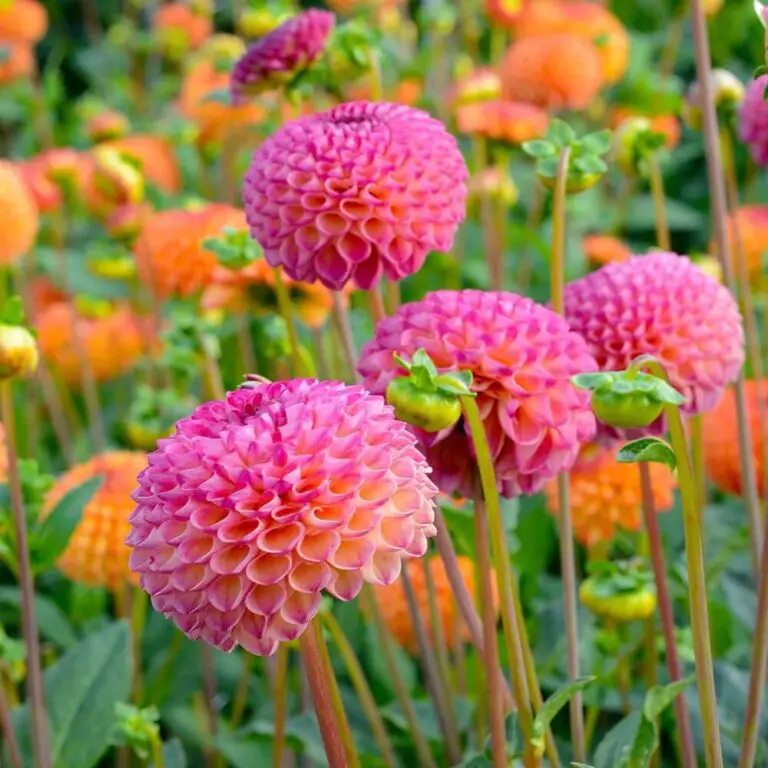28 Beautiful Flowers That Bloom At Night
While it’s true that many people assume that flowers that bloom at night can’t be fully appreciated, there’s something truly special about witnessing these nocturnal blooms. Whether you’re enjoying a midnight stroll or working late into the night, having flowers that illuminate your space with their beauty is a unique experience. In this article, we’ll take a closer look at 28 night-blooming flowers that are worth getting to know.
28 flowers that bloom at night
While the term ‘night-blooming flowers’ may evoke images of exotic blooms that only unfurl under the cover of darkness, reality is often more nuanced. Many flowers don’t just stop blooming at dawn, but rather, they reach their peak majesty and fragrance during the nighttime hours. With this in mind, let’s explore 28 enchanting flowers that truly come alive after sunset.
Gardenia Augusta
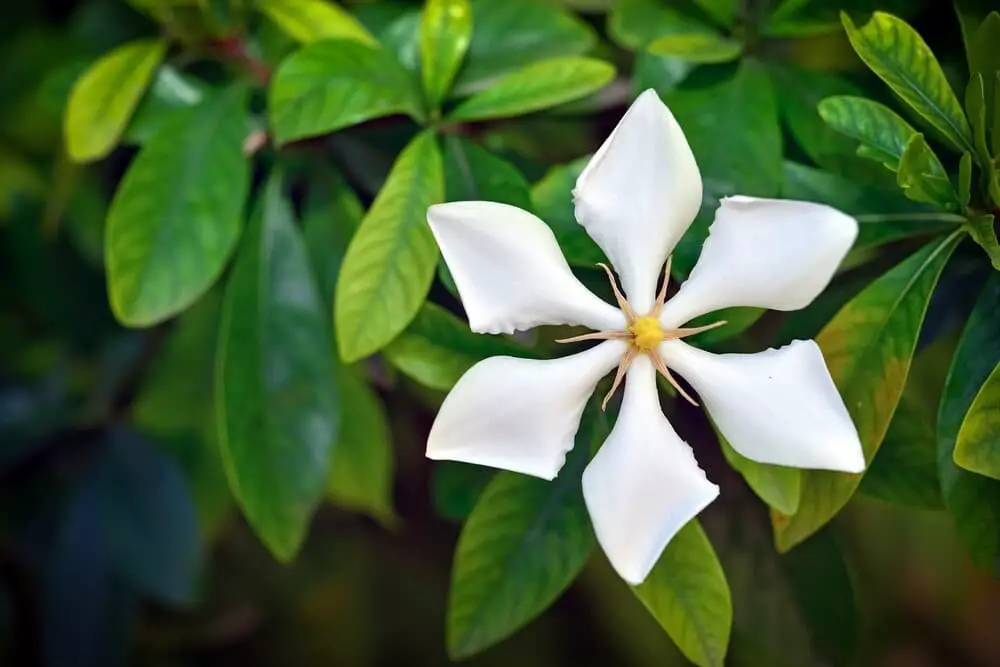
Gardenias are renowned for their intoxicating aroma, making them a timeless favorite among landscape enthusiasts. However, this particular species stands out by emitting its distinctive fragrance consistently throughout the day and intensifying it as night falls. As a result, planting them in your yard or driveway ensures that you’ll be greeted with a sweet, robust scent at dusk, tantalizing your senses and invigorating your evening.
Brugmansia
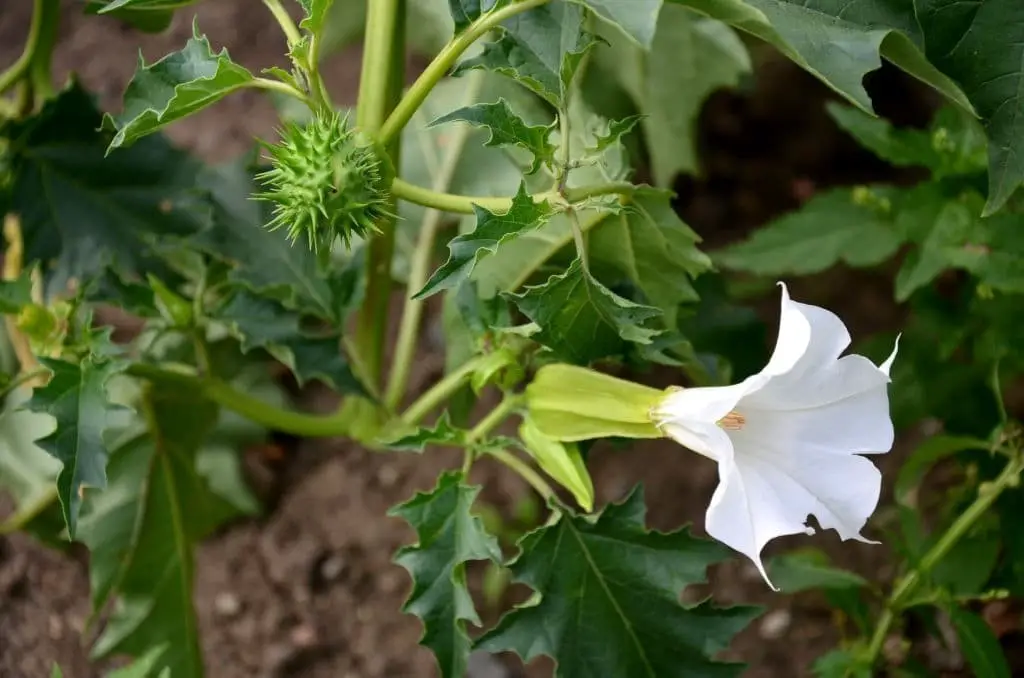
The nocturnal beauty of this flowering tree is a true marvel. Its delicate white trumpet-shaped blooms only appear at night, under the radiant glow of the full moon, and last for just a fleeting week. This captivating sight is a rare treat that’s sure to leave you enchanted. As an added bonus, this tree thrives in zone 8, making it an excellent choice for container gardens.
Furthermore, its leathery, bright green leaves can be easily overwintered indoors, allowing you to bring a touch of nature into your home.
Moonflower
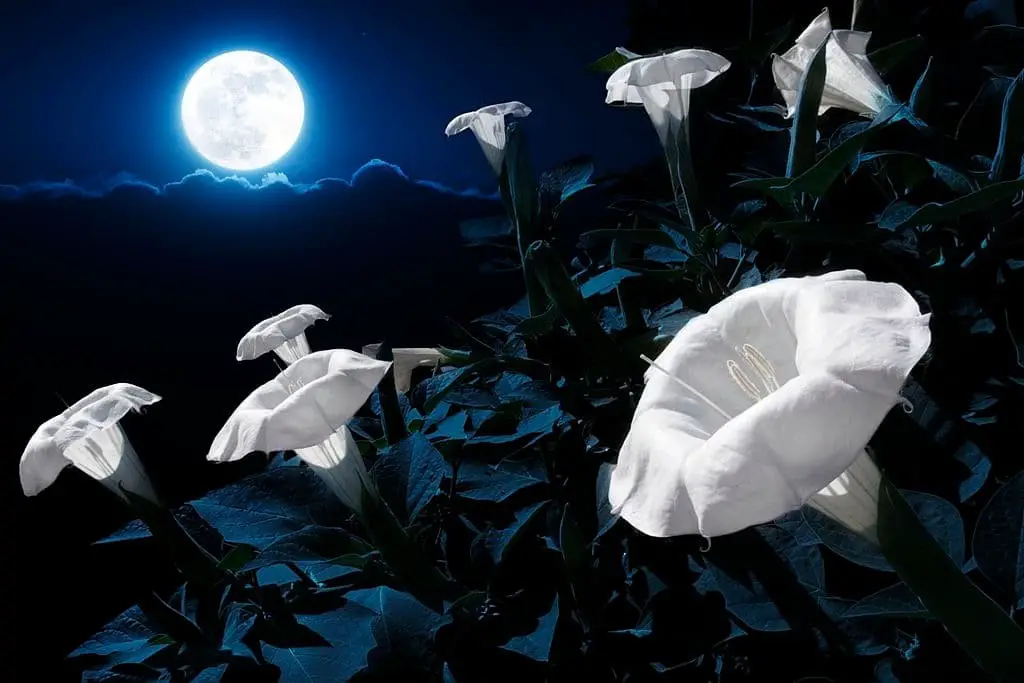
The moonflower, aptly named due to its nocturnal blooming habits, boasts striking white blooms that unfold under the cover of darkness. This enigmatic plant has garnered a rich cultural heritage, earning it multiple monikers such as jimson weed, datura, and angel’s trumpet. A subtle yet alluring white sphinx-like structure adorns the moonflower, drawing in an array of pollinators including butterflies, moths, bees, and other nocturnal visitors.
Night phlox
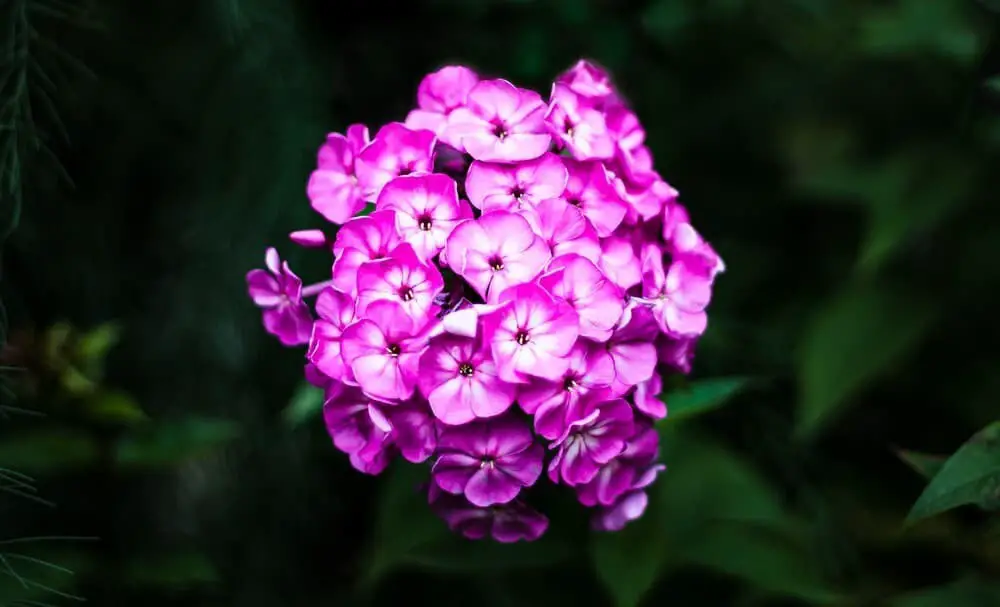
The Night-Blooming Jasmine, also referred to as the midnight sweet or 12 o’clock flower, is a unique plant with white and purple blooms that are tightly closed during the day. It’s only when dusk approaches that these flowers begin to open, revealing an additional pink hue by nightfall. The name midnight sweet is particularly fitting, given the plant’s intoxicating scent of almond, honey, and vanilla, which becomes more pronounced at night.
This sweet aroma can be enjoyed throughout the summer months as the plant blooms in the evening hours.
Evening primrose
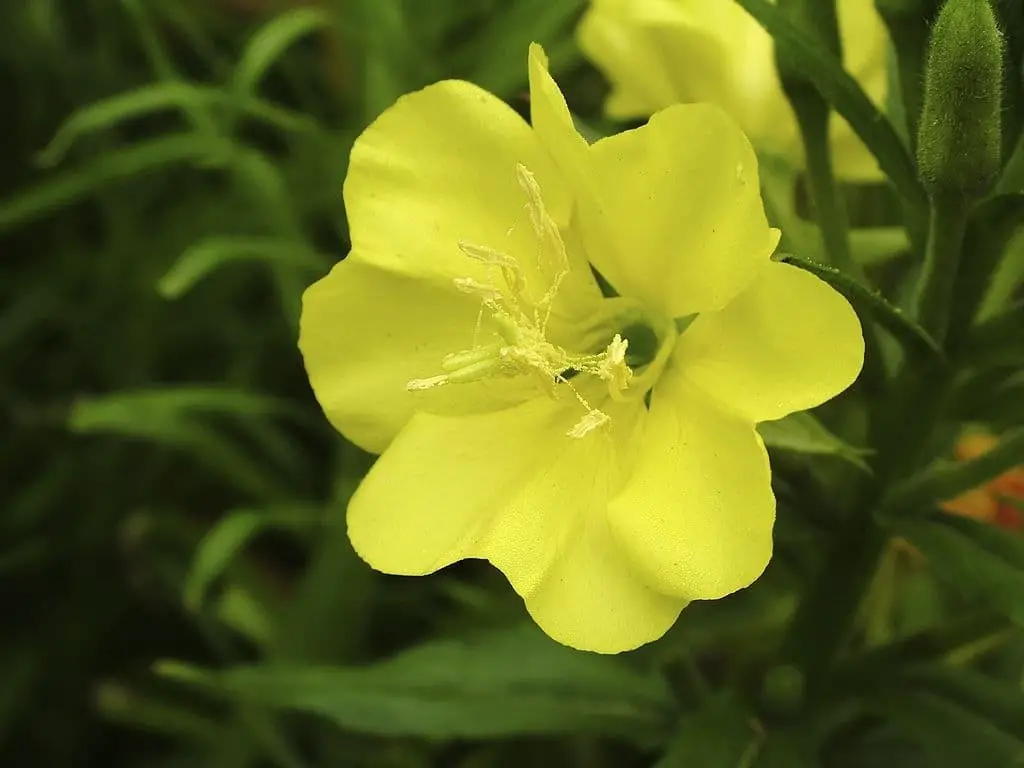
A distinctive feature of North America, the Evening Primrose boasts an enchanting display of yellow, white, and pink blossoms that remarkably bloom only at night. This flower has been steeped in historical importance among native American tribes, who have long revered it for its medicinal properties. The dried blooms are transformed into tea or extracted to produce oil, which is utilized to treat burns, wounds, and allergies.
Moreover, the yellow flowers of the Evening Primrose serve as a magnet for nocturnal insects, including the aptly named yellow sphinx.
Evening bloom water lilies
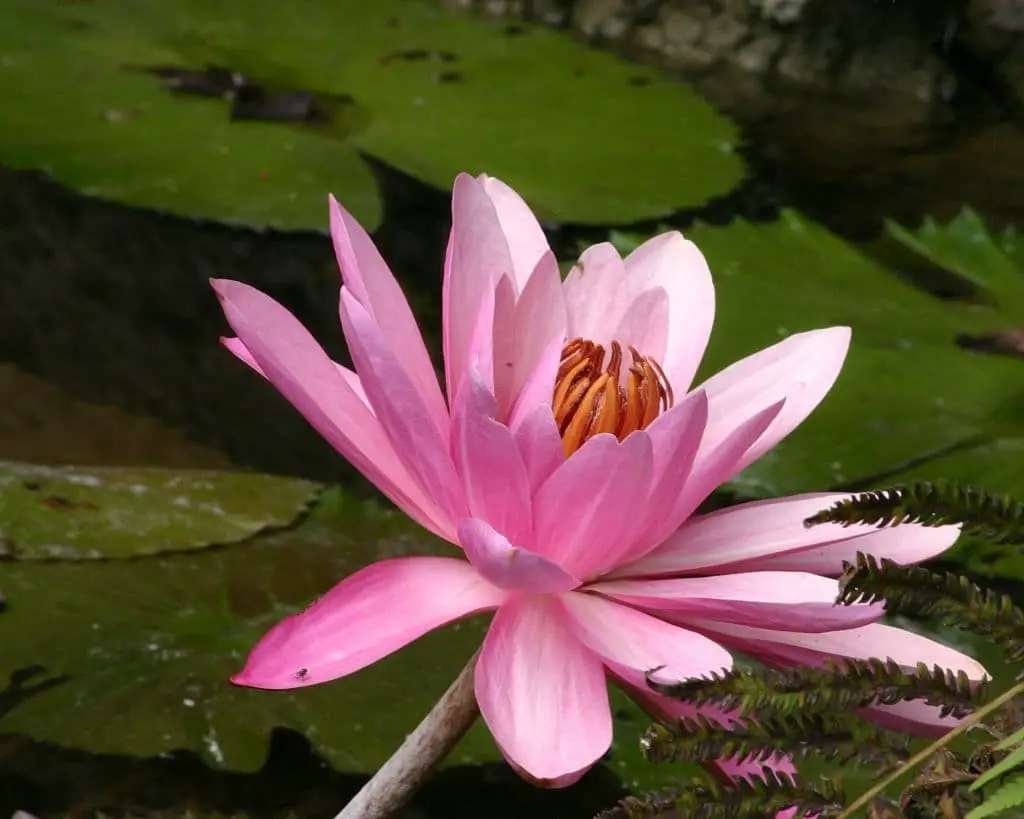
For a truly enchanting landscape feature, consider incorporating a water-based element into your design. If you’re fortunate enough to have a natural pond or small waterfall on your property, this can be the perfect focal point for your outdoor space. Imagine gathering around a warm firepit as the sun sets and the night-blooming lilies come into their own, showcasing stunning purple, pink, or crimson red hues that are sure to captivate.
One of the key benefits of these unique flowers is their larger-than-average blooms and sturdy stems, which set them apart from more typical lily varieties. For those looking to add an extra layer of meaning and symbolism to their landscape design, exploring the significance of lilies can be a fascinating journey – one that’s closely tied to their beauty and allure.
Casablanca lily
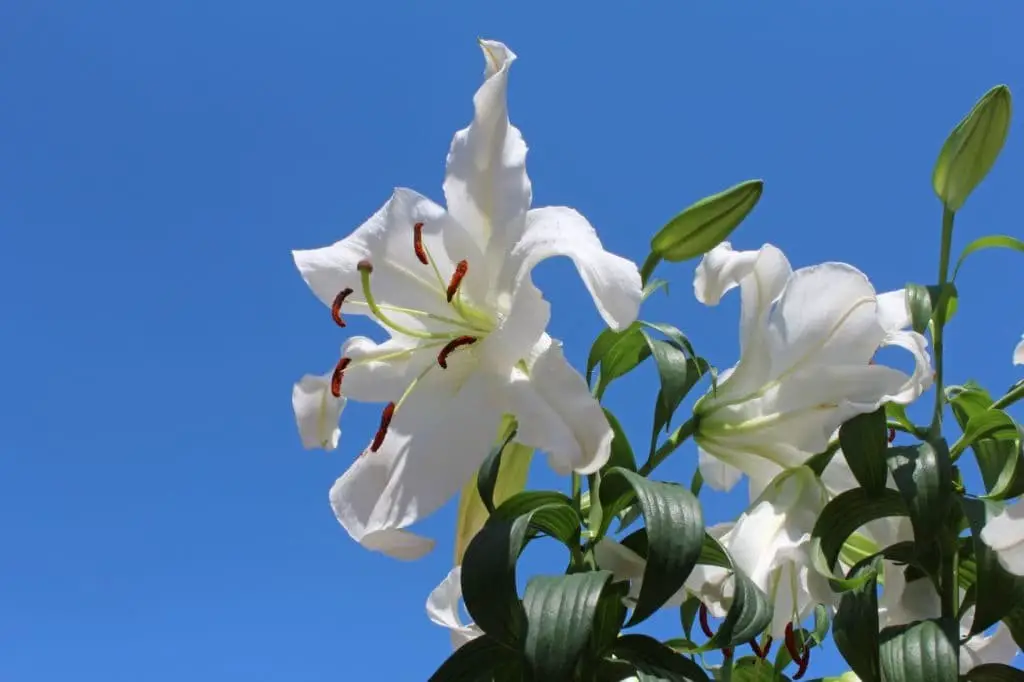
As twilight approaches, the evening dusk brings forth a stunning display of bold, vibrant flowers in shades of pink, white, orange, yellow, and purple. But it’s not just their striking appearance that makes them special – these flowers also emit a powerful, fragrant scent that fills the air. However, this beauty comes at a cost. The fragrance is highly prized for use in perfumes and oils, making it a valuable commodity.
Similarly, the blooms are sought after for wedding bouquets, adding to their allure. While the exclusivity of these flowers may make them more desirable, it’s a trade-off that many would be willing to make for the unique experience they provide.
Angel’s trumpet
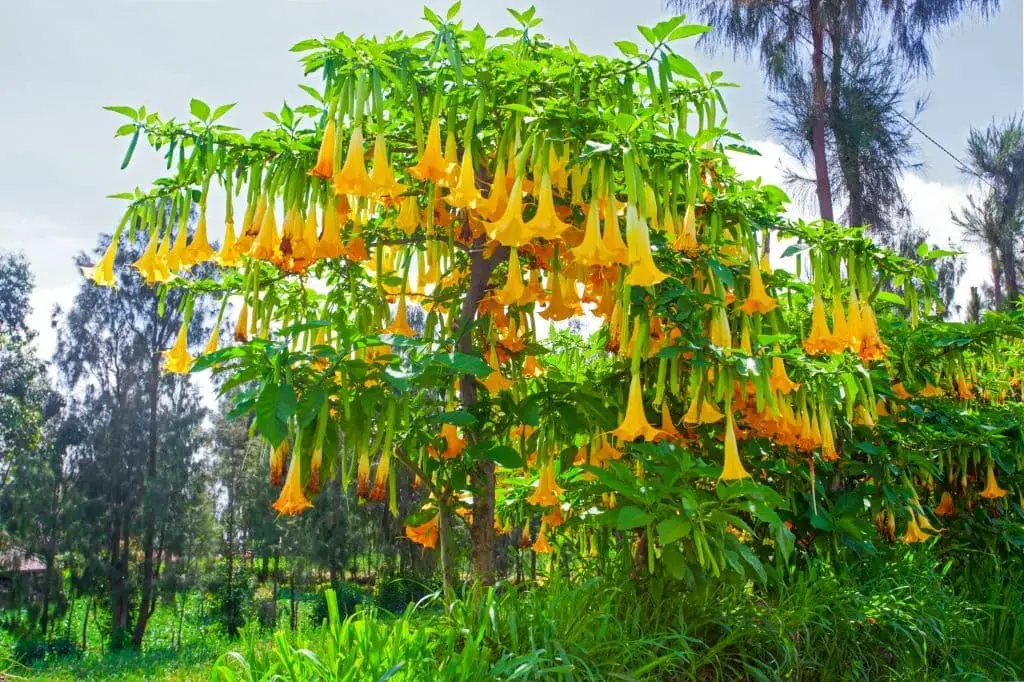
The tubular, white flowers of this plant are a fragrant treat for the senses, blooming throughout the day and reaching their peak intensity on warm summer evenings. However, it’s essential to note that its beauty comes with a caution: when ingested, the plant’s toxicity can be harmful to both pets and humans, due to its membership in the nightshade family.
Nottingham catchfly
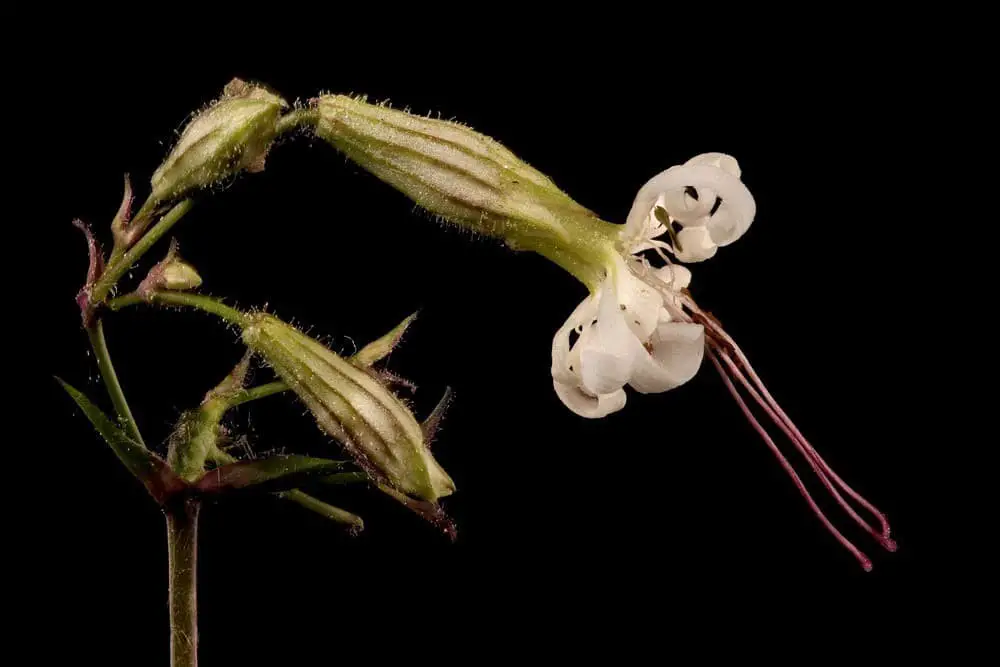
The Nottingham Palace Foxglove boasts a rich history, its name derived from the plant’s tendency to grow wild around the palace. Although they were destroyed during the 1900s palace renovation, the Foxglove’s allure endures. Its vibrant blooms and intoxicating fragrance, only detectable at night, have made it a beloved favorite in the UK since then.
Notably, the Foxglove displays unique characteristics, including slender, spear-shaped branches and spoon-shaped leaves that add to its distinct charm.
Dutchman’s pipe cactus
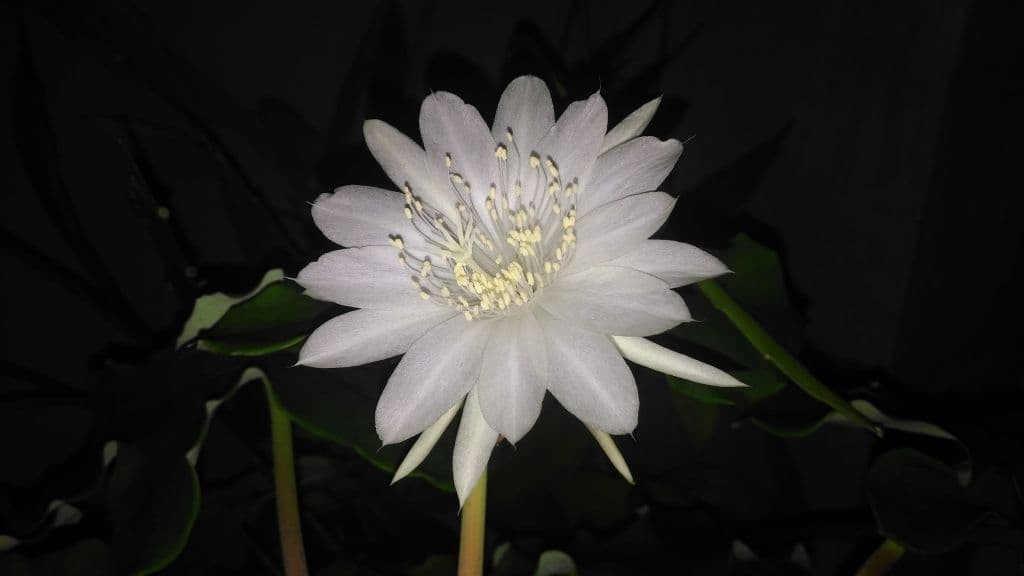
The majestic flower boasts a single, large blossom that measures approximately 10 inches in length and 4 inches in width. What’s truly remarkable is its unique opening pattern – it begins to unfurl only as the sun dips below the horizon. This delicate flower also releases its sweet fragrance into the evening air, filling the atmosphere with its alluring scent from spring to summer.
Though its bloom time is relatively short-lived, lasting just three consecutive days, this fleeting beauty makes up for its brevity with its extraordinary characteristics. Originating from South America’s lush rainforests, this enigmatic flower has adapted to thrive in its native habitat.
Lotus
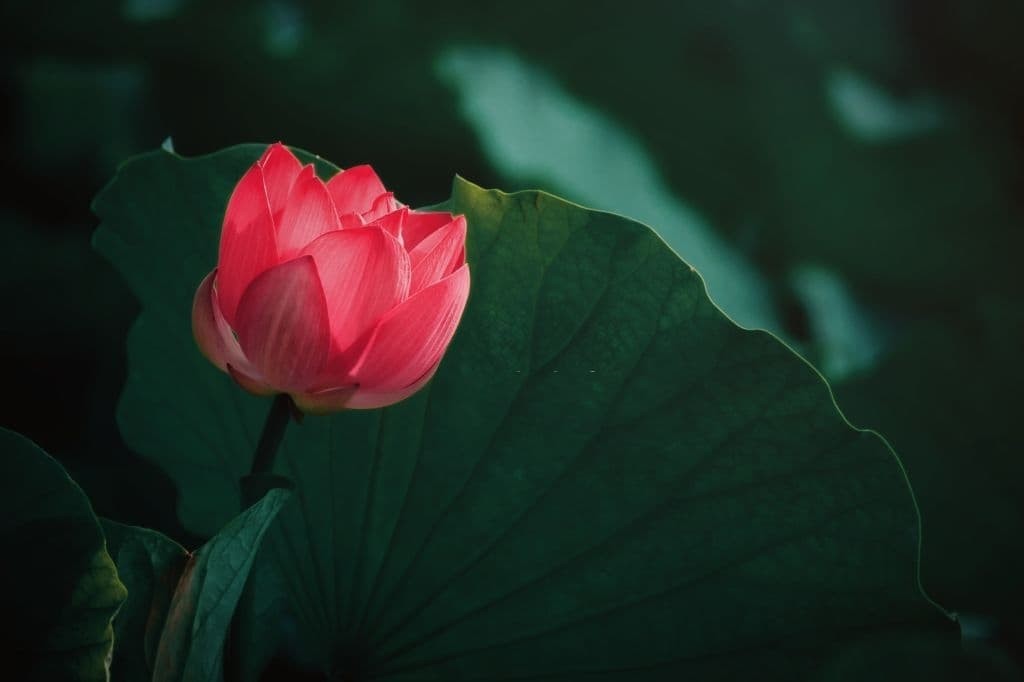
The lotus flower stands out as the most well-known night bloomer among all nocturnal plants. This unique habit has led to its association with profound concepts such as enlightenment, rebirth, and deep spirituality. Interestingly, it holds significant cultural and religious value in major belief systems like Christianity and Buddhism, among others. The lotus’s colors range from purple to red to pink, offering a visually stunning display.
Its fragrance is said to be so potent that it can be detected from several meters away, further emphasizing its unique characteristics.
Opening Night rose
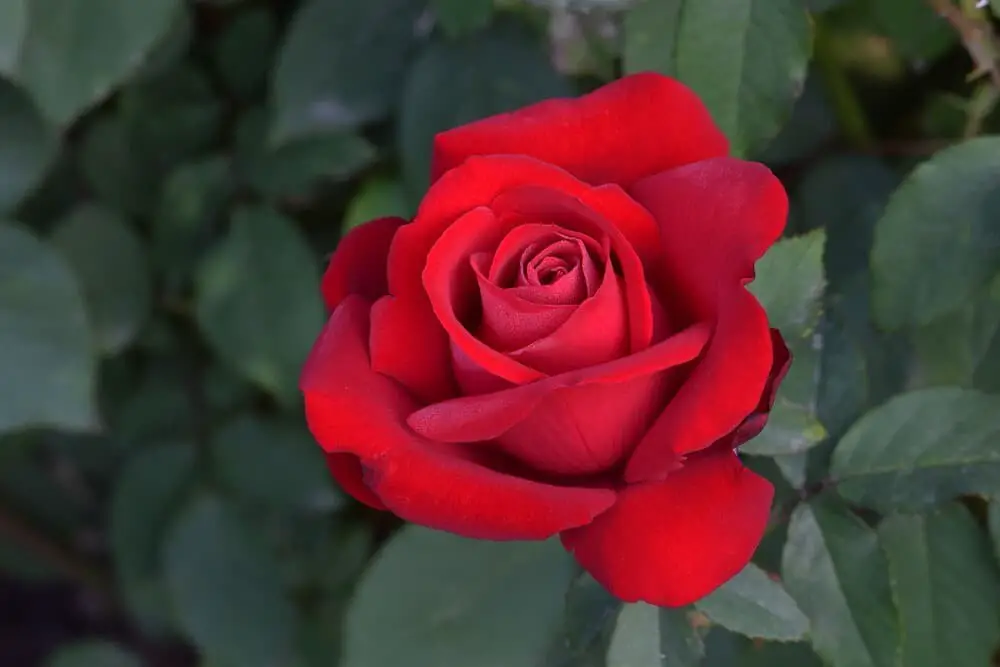
While its common name implies a nocturnal habit, this flower’s unique characteristic is limited to a single minute of blooming at night. This distinctive feature, combined with its intoxicating rose fragrance that becomes evident at dusk, sets it apart as an intriguing nighttime bloom. The plant comes in a range of colors including white, yellow, and red, and is native to the regions of North and South America.
Tuberose

While not a member of the Rosaceae family, the Plumeria shares some striking similarities with roses – its radiant white blooms and potent fragrance do not fail to impress. The diminutive, snow-white flowers of this plant unfurl in clusters, but only under the cover of night, from spring to summer. As a native of Mexico, the Plumeria holds great cultural significance in Aztec lore and tradition, where it is revered as the ‘bones flower’ and plays a crucial role in sacred ceremonies.
Today, its flowers are still prized for their pungent scented oils, further solidifying its importance in modern times.
Chaenomeles
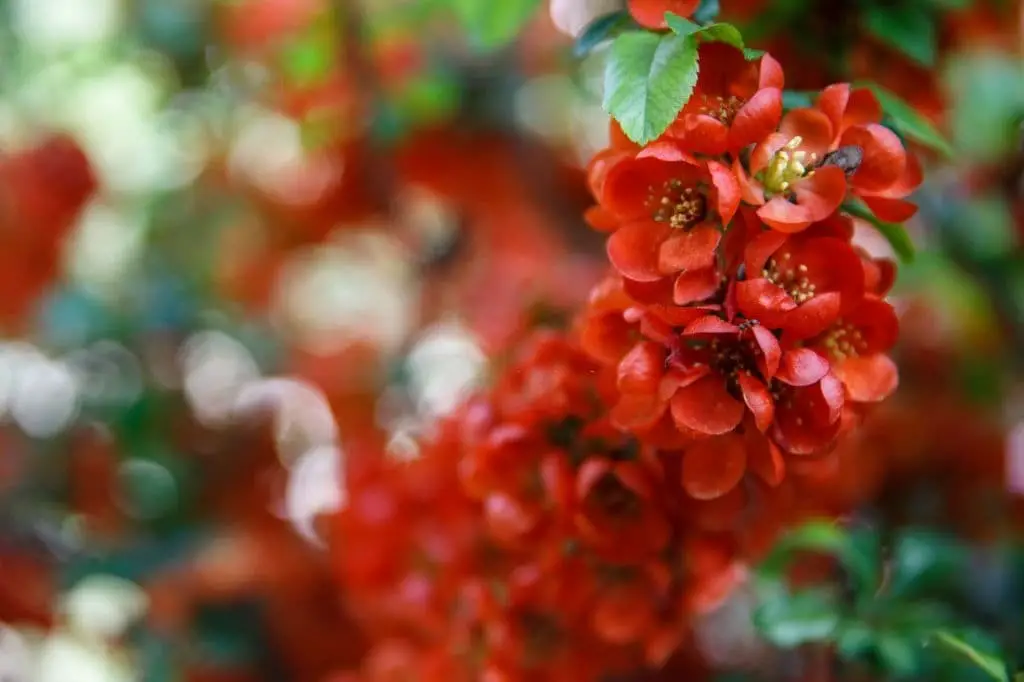
The flowering quince, also known as its other name, presents an intriguing appearance when viewed from a distance – its delicate petals resembling those of cherry blossoms on sturdier stems. What’s even more captivating is the fact that it only blooms in the darkness, yet its vibrant white and pink hues remain strikingly visible even at night. This rose family member is native to East Asia, with China, Korea, Japan, and Taiwan being its primary habitats.
As a cold-hardy plant, it’s an excellent choice for enhancing your fall and winter garden.
Easter lily cactus

The hedgehog cactus, also known as echinopsis, boasts a unique characteristic – its small clusters of white or yellow flowers only emerge after sunset. This peculiar blooming habit adds to the plant’s mystique. Native to South America, this popular choice for xeriscapes and desert gardens is not only visually striking but also low-maintenance, making it an ideal addition to any arid landscape.
Four o’clocks
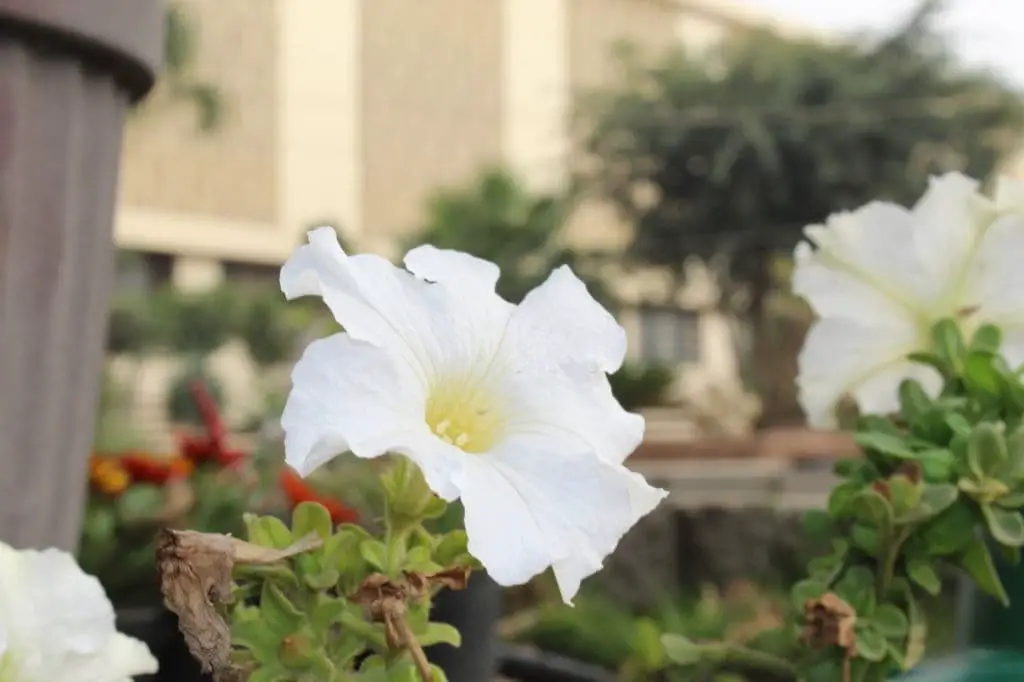
While it’s easy to confuse with the twelve o’clocks, these two plants are distinct flowering species. The hardy perennial in question boasts deep pink, red, and yellow blooms that not only burst forth during the day but also intensify their fragrance at night. This plant is a natural choice for adding a pop of color and tropical flair to any landscape. What’s more, its flowers undergo a delightful color transformation from spring to early summer, making it a true marvel of botanical wonder.
Burning hearts
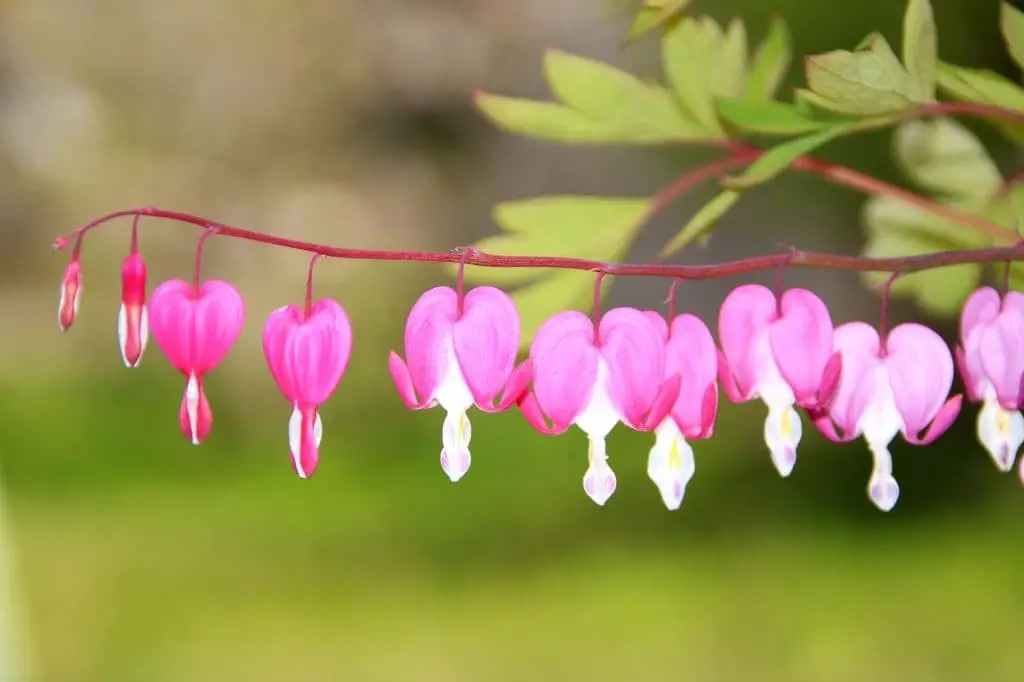
The Dragon Flower, a fiery beauty with heart-shaped blooms that take on a deep red hue, proves its name to be fitting. This hardy flowering plant thrives in cold climates and can withstand frost, flourishing in partial to full shade environments. While its vibrant blooms are a treat for the senses, they only bloom from April to September, and their beauty is best appreciated under the night sky.
To ensure this plant’s survival, one key consideration is maintaining dry soil conditions, as it typically resides in regions where moisture is abundant.
Pulmonaria

In the realm of low-light landscapes, a standout star is this resilient flowering plant. Its natural habitats lie in eastern Asia and Europe, where it flourishes in environments with limited sunlight. One of its most striking features is the vibrant tricolor blooms that unfurl on trumpet-shaped flowers, exhibiting a mesmerizing palette of pink, lilac, and red hues. These nocturnal blooms are at their most profuse during spring and summer, painting the landscape with an otherworldly beauty.
As for maintenance, this plant’s only strict requirement is to receive regular watering, making it an ideal choice for busy gardeners. Its unique characteristics have earned it a special place in many gardens.
Flowering tobacco
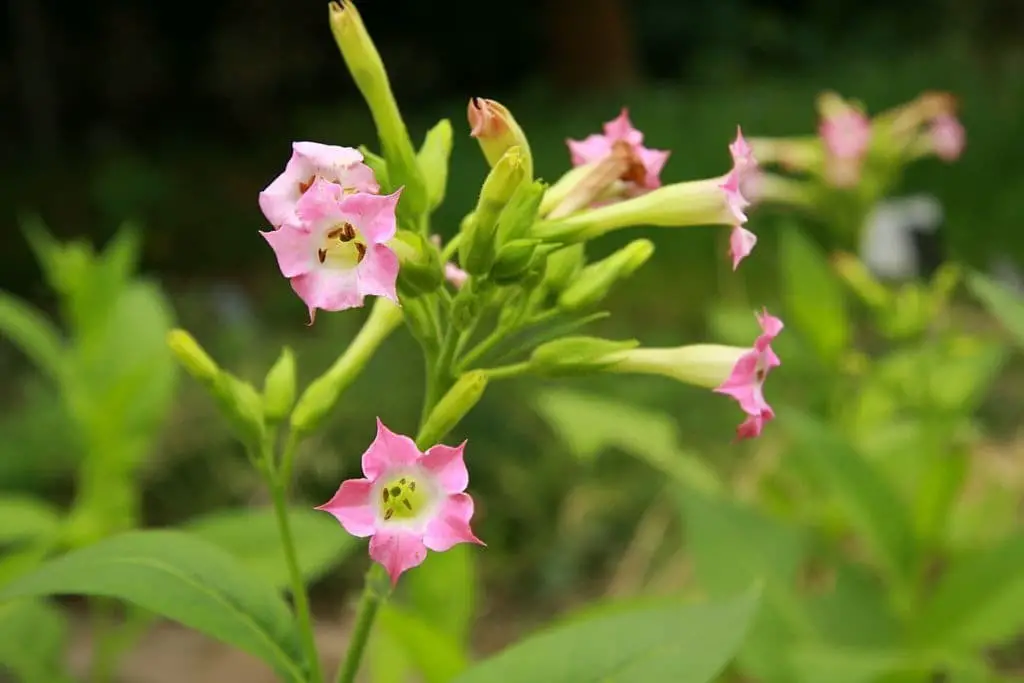
In the lush gardens of South America, this perennial plant is a treasured gem. While it grows taller in the southern regions, reaching 3-5ft in height, its beauty is truly revealed at night. The delicate flowers, boasting shades of pink, white, yellow, red, and green, only bloom after sundown, casting a mesmerizing glow on the evening landscape. As a nocturnal haven, it attracts a steady supply of nectar-seeking moths, providing a vital source of sustenance for these creatures.
However, it’s essential to note that this plant contains nicotine, making it potentially hazardous to pets and other animals. Despite its allure, it’s crucial to handle this beauty with care.
Night blooming jasmine
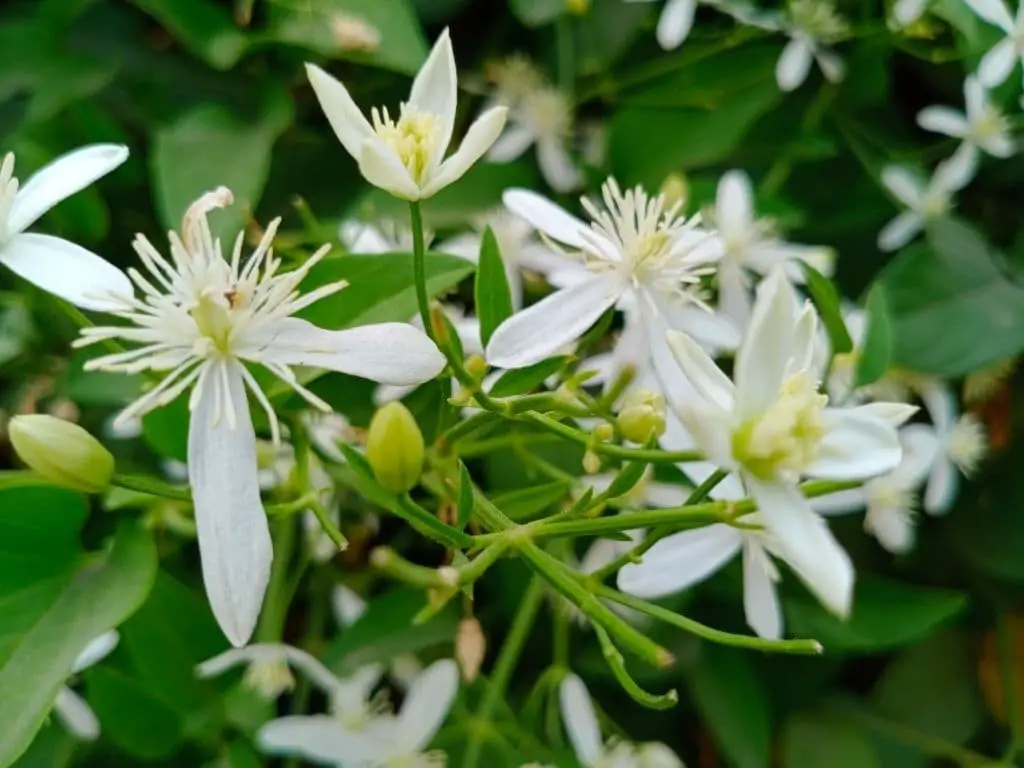
While not a true jasmine in every sense, this small, white, and fragrant shrub still holds its own charm. Its delicate blooms emit a scent reminiscent of true jasmines, but with one key difference: they only unfurl their tube-shaped petals under the cover of night. However, it’s essential to note that this tropical plant belongs to the notorious nightshade family, which means that consuming any part of it can be toxic to pets.
Chocolate daisy
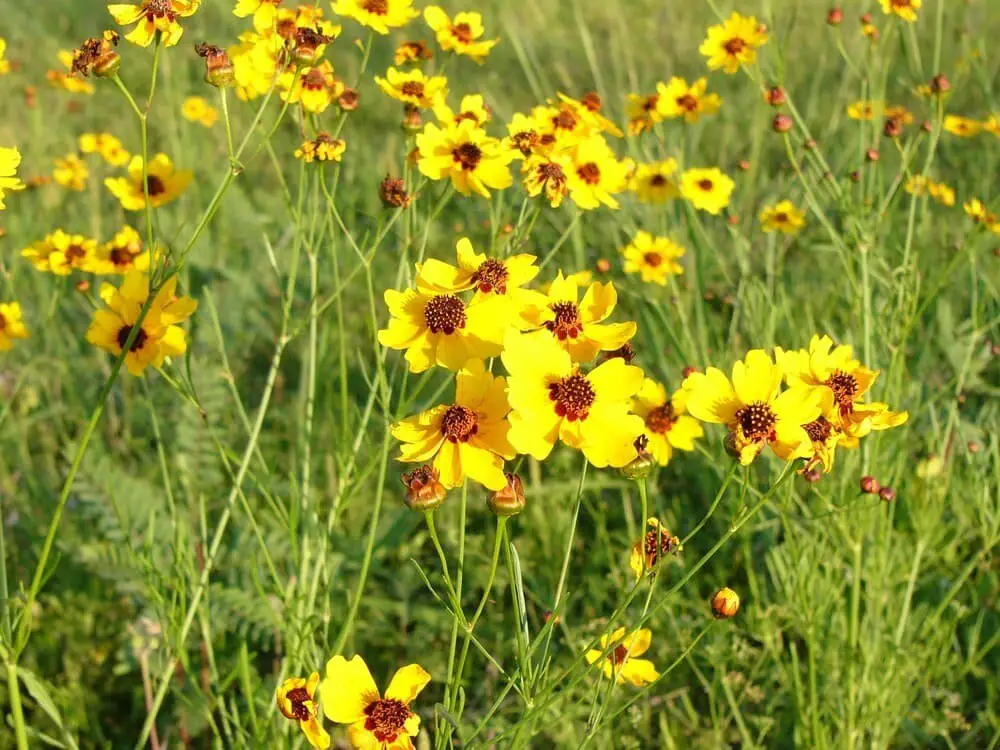
For a pop of vibrant color in your evening garden, consider adding bright and cheerful Liatris flowers. These daisy-like blooms with chocolate brown centers are perfect for driveways, walkways, and underplanting. Despite being considered tropical, they thrive in cooler climates and can bloom year-round in warmer regions after sunset. In colder temperatures, you can expect their blooming period to stretch from spring to the first winter frost.
Liatris flowers are a great addition to any garden seeking a burst of warmth and energy.
Foamflower
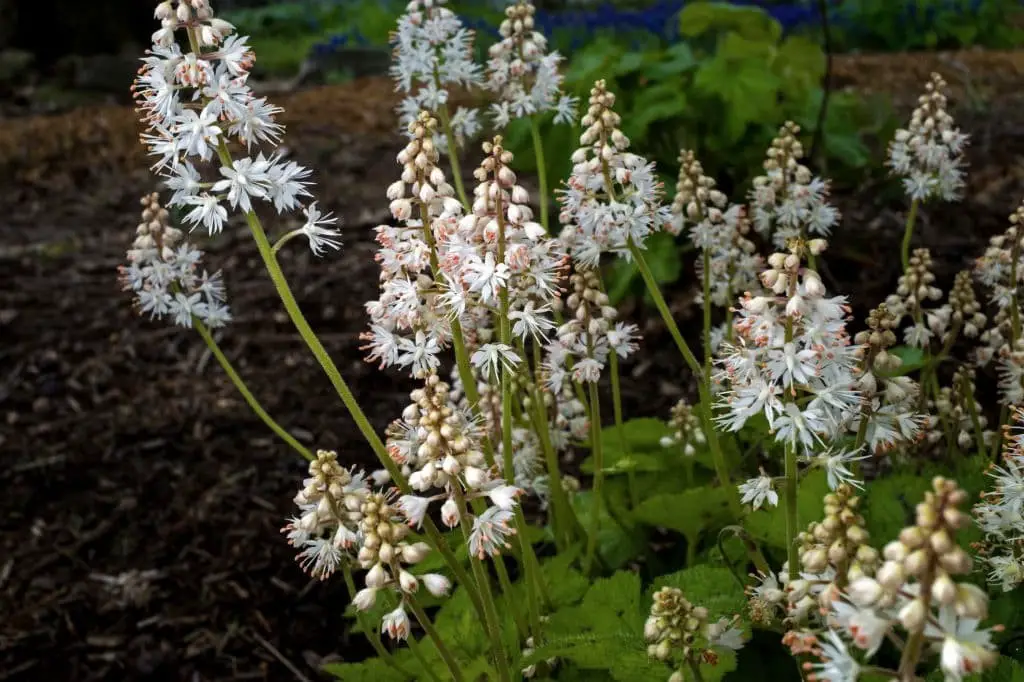
In many spring gardens, the night blooming star (Oenothera speciosa) is a trusted companion, often planted along pathways or used as groundcover or underplantings in larger landscapes. This perennial’s most notable feature is its showy display of white, heart-shaped flowers that appear throughout the spring and early summer seasons.
Reaching heights of up to 12 inches, this low-maintenance beauty thrives in zones 4-9, where it can bask in full shade and feed on rich, organic soils.
With its adaptability and striking visual appeal, the night blooming star is an excellent addition to any springtime garden.
Ten-petal blazing star
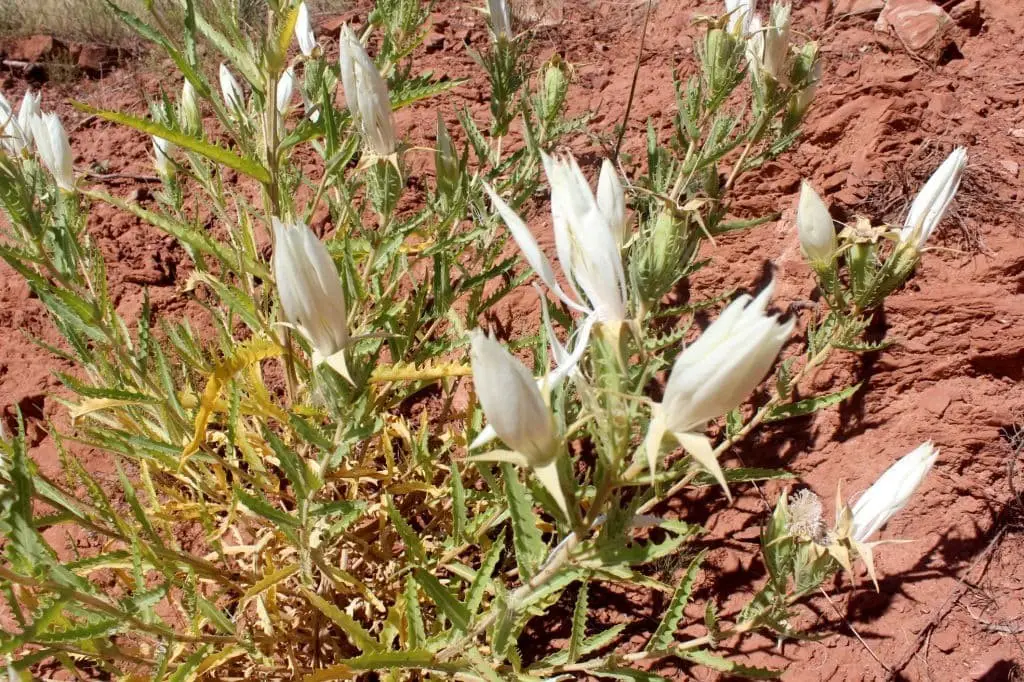
This iconic perennial’s charm lies in its ability to thrive in challenging conditions. Its vibrant blooms are just the beginning, as its leaves offer a striking visual display throughout its life cycle. In its first year of growth, the leaves form neatly rounded rosettes, gradually evolving into deeply serrated shapes as they mature.
The real showstopper arrives in its second year, when a sturdy flower stem emerges and is crowned with white, fragrantly scented flowers that burst forth in late afternoon, only to close their petals before morning’s dawn from midsummer through the fall season.
Night scented stock
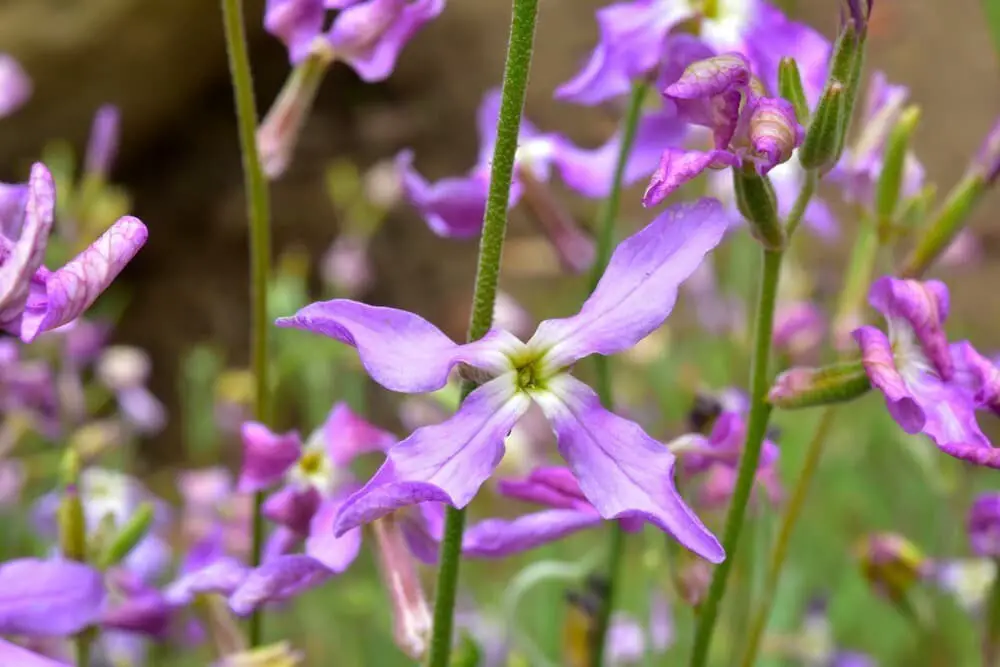
In its natural desert environment, this unique species has adapted to thrive under harsh conditions. Its scented, purple flowers bloom only twice a year – once during the full spring moons and again on winter nights. This ephemeral display is short-lived, as the plant reaches just 2ft in height and dies shortly after setting seeds. However, with each monsoon season, a new generation of plants emerges to take its place.
Night gladiolus (Gladiolus tristis)
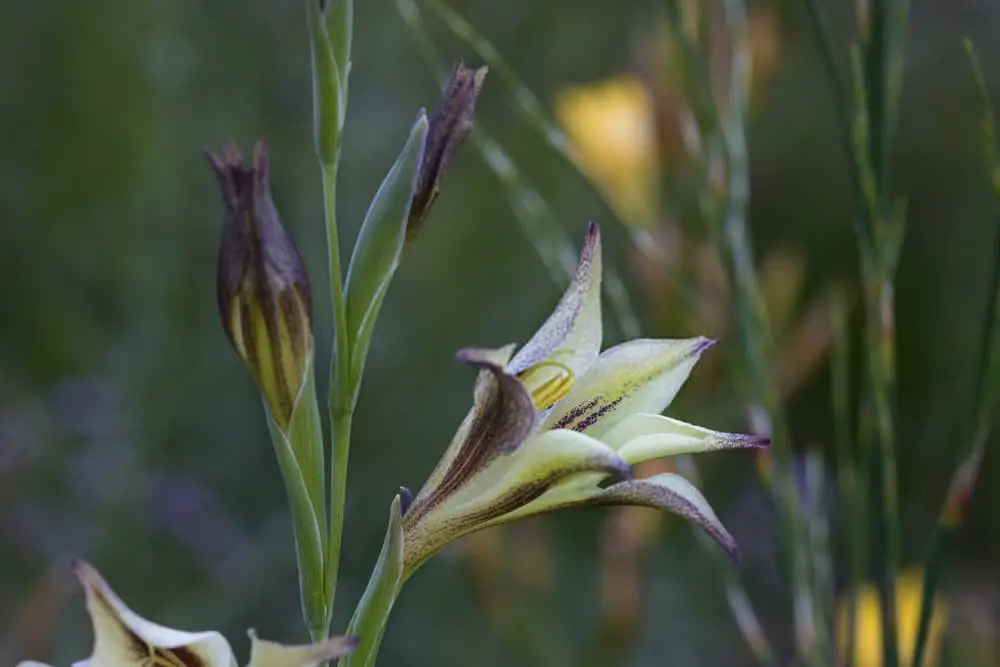
This coastal flowering plant, boasting white and yellow blooms, is a unique sight after dusk from late spring to midsummer. The added bonus is its distinctive spicy fragrance. As a California native, it does require significant moisture, making it less suitable for arid environments.
Despite its picturesque appearance and alluring scent, the primary drawback of this plant lies in its toxicity.
Unfortunately, it poses a threat not only to pets but also animals and humans alike, making it essential to exercise caution when handling or growing this species.
Night scented orchid (Epidendrum nocturnum)

While not a consistent night bloomer in the classical sense, this unique flower still emits a captivating fragrance in the evening hours, allowing you to appreciate its sweet aroma with or without its striking white and yellow blooms. Its natural habitat is found in bogs and swamps across South and Central America, as well as regions such as Florida, New Mexico, and the West Indies.
This plant’s independence from pollinators sets it apart from many other orchid species, making it a fascinating addition to any botanical collection.
Queen of the night (Epiphyllum oxypetalum)

The list would not be exhaustive without the mention of the night-blooming cereus, also known as Epiphyllum oxypetalum. This fascinating plant is a type of cactus that boasts a singular, large, and intensely fragrant white flower. A unique characteristic of this bloom is its nocturnal nature – it only opens at night and remains open for just a few hours before closing at dawn.
Native to tropical regions, the night-blooming cereus has proven itself adaptable, thriving in indoor environments as well.
Corpse flower
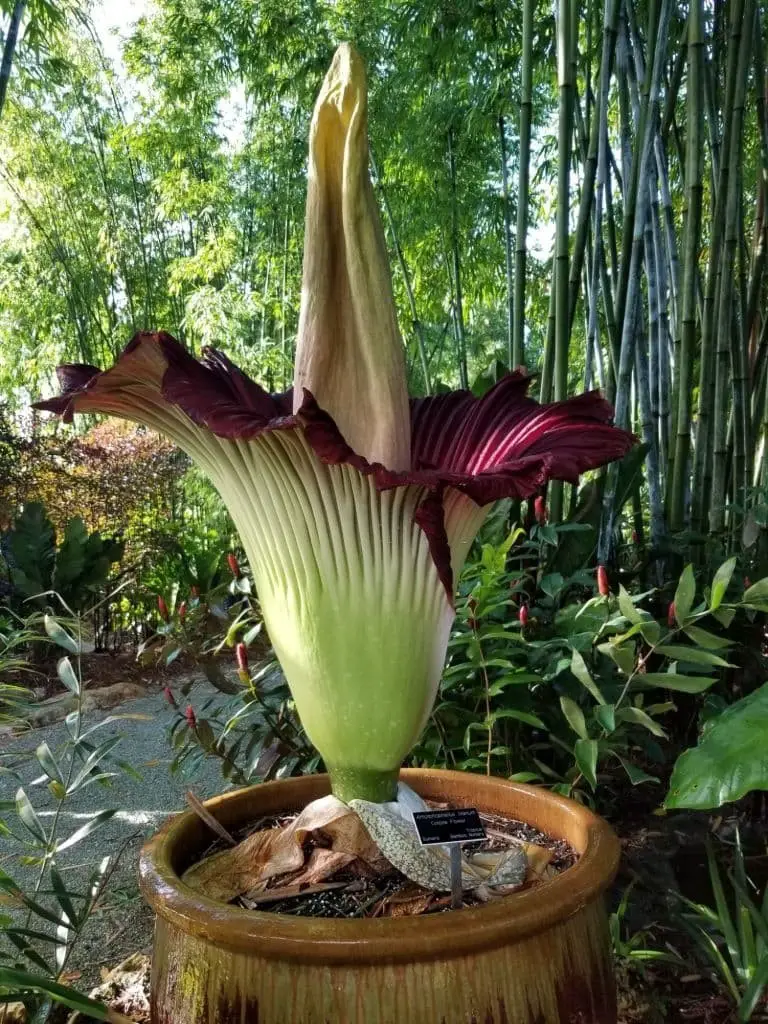
Imagine having a plant so pungent that its aroma would be unbearable around your outdoor space, yet this very same plant is actually an exotic beauty. The Titan Arum, as its name suggests, emits a scent reminiscent of rotting flesh, making it hardly suitable for landscaping purposes. However, despite being an uninviting companion in the garden, it boasts a unique allure as the largest and most extraordinary flowering plant that blooms under the cover of darkness.
Reaching heights of up to 12 feet and widths of 20 feet, this rare species thrives in high-elevation rainforests across Southeast Asia, including Malaysia, Indonesia, and the Philippines. Its unusual habits make it a fascinating subject of study, even if its scent would be best appreciated from a safe distance.
FAQs
What flowers close at night?
While this post delves into the world of nocturnal blooming flowers, it’s equally fascinating to explore those that close their buds at night. This dichotomy offers a unique insight into the floral kingdom’s rhythms and patterns. As such, let’s take a closer look at some of the most prominent flowering plants that retract their petals or sepals when the sun dips below the horizon.
These include Gazania, California poppy, Morning glory, African daisy, Crocus, Tulip, Oxalis, Chickweed, and Magnolia, as well as the Rose of Sharon, each with its own distinct characteristics and adaptations to suit its nighttime habits.
What flower blooms only at night every hundred years?
The Agave ocahui, also known as the century plant, is often misunderstood to only bloom once every hundred years. However, according to the Arid Greenhouse of the Chicago Botanical Garden, this isn’t entirely accurate. In reality, this unique plant typically blooms once on the 30th anniversary of its planting and then annually afterwards, defying expectations with a more frequent display of its beauty.
What are the rarest blooming flowers?
Beyond the mystique of night-blooming flowers, there exist even rarer and more extraordinary species that deserve attention. For those intrigued by these unusual blooms, here’s a list of some of the most remarkable ones: The Flame lily, Lady’s slipper orchid, Ghost orchid, Jade vine, Gibraltar campion, Chocolate cosmos, Middlemist’s red, Juliet rose, Franklin flower, Cooke’s Kokio, and Kadupul flower, as well as Parrot’s beak. These unique flowers are a true marvel of nature.
How dangerous are moonflowers?
The nocturnal Datura species is infamous for its potency, earning it a string of ominous nicknames such as devil’s weed or witch’s weed. Despite its stunning white, trumpet-shaped blooms that only unfurl at night, the plant’s toxicity is well-documented. Ingestion can lead to hallucinations, and in extreme cases, consumption can have catastrophic consequences, including cardiac arrest brought on by sudden changes in blood pressure and heart rate.
Interestingly, every part of this flowering plant – leaves, stems, roots, and flowers alike – poses a significant risk to humans, pets, and animals alike.
Conclusion
The mysteries of nature are many, with some phenomena being nothing short of breathtakingly beautiful. Take the night-blooming flowers that adorn gardens and indoor spaces alike, their delicate petals unfolding like tiny stars in the darkness. Adding these floral wonders to your bedroom, windowsill, or landscape can be a game-changer for nighttime events or simply creating a serene ambiance before drifting off to sleep. The best part?
There’s a vast array of night-blooming plants to choose from, and most are surprisingly low-maintenance, making them accessible to anyone looking to bring a touch of the unknown into their daily lives.
Related Posts
When it comes to flower delivery, tipping your courier is often a topic of debate. However, understanding the proper gratuity can be beneficial for both you and your florist. The key is to consider the service provided, the quality of the arrangement, and the overall experience. A general rule of thumb is to tip 10-15% of the total cost of the order, with a minimum of $5-10. This shows appreciation for their work while also being mindful of your budget.





